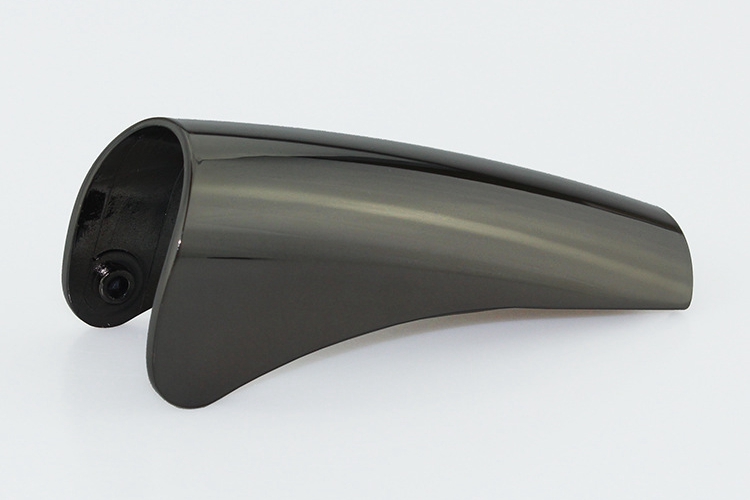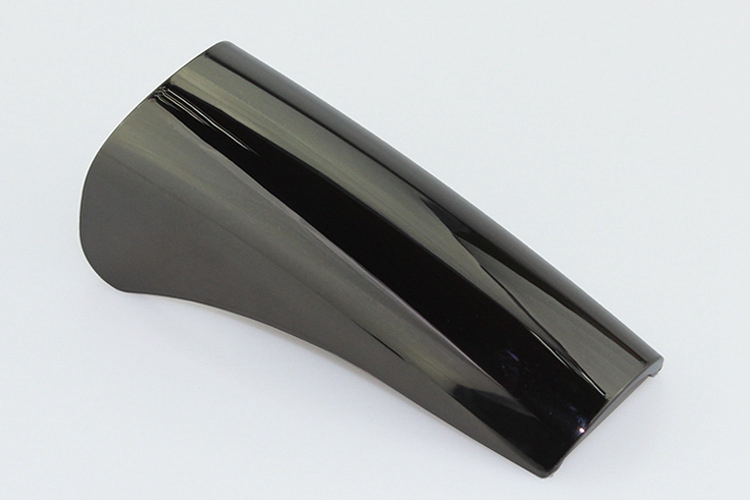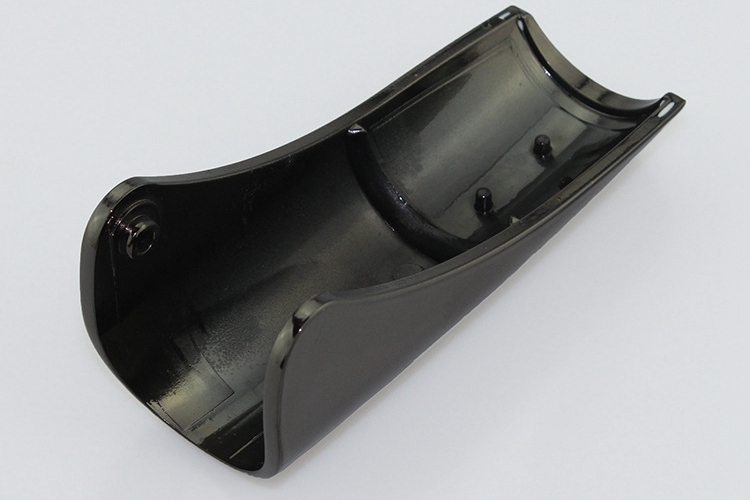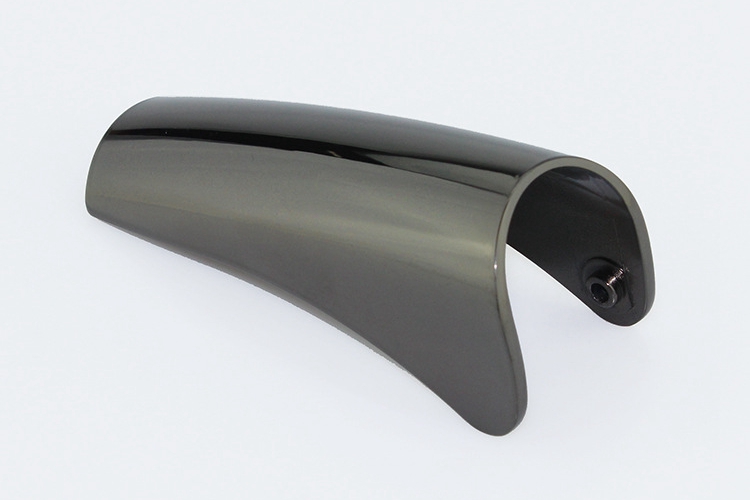How Zamak 3 Die Casting Creates Superior Custom Wine Bottle Openers
In the competitive world of consumer products, the choice of materials and manufacturing technology plays a crucial role in determining the quality and appeal of the final product. This is particularly true for items that combine functionality with aesthetics, such as custom wine bottle openers. Manufacturers can create products that meet and exceed consumer expectations by leveraging advanced manufacturing techniques and high-quality materials.
One exemplary case is using Zinc Alloy Zamak 3 in die-casting custom wine bottle openers. This blog will delve into the sophisticated processes of creating these elegant and durable openers, from the initial casting to the final finishing touches. We can understand what makes these custom wine bottle openers stand out by exploring the technology, materials, and surface finishes employed.

Manufacturing Technology Overview
Zamak 3 Die Casting
Zamak 3 die casting is a cornerstone technology in producing custom wine bottle openers. Die casting involves forcing molten metal into a mold cavity under high pressure. This process allows for creating complex shapes with high dimensional accuracy and smooth surface finishes. Zamak 3, a zinc-aluminum alloy, is specifically chosen for its excellent mechanical properties, strength, flexibility, and impact resistance.
The benefits of using Zamak 3 in die casting are numerous:
It provides high precision, essential for producing intricate designs and ensuring consistent quality across batches.
Zamak 3 has excellent casting properties, allowing for the production of thin-walled components that are both lightweight and strong.
Its ability to undergo surface treatments effectively makes it an ideal choice for products requiring a high-quality finish.
Fine Polishing
Fine polishing is a critical step in the manufacturing process that significantly enhances the aesthetic and tactile qualities of the final product. This process involves gradually removing surface imperfections and achieving a smooth, reflective finish. Fine polishing is essential for consumer products like wine bottle openers, where the look and feel of the product can impact the user's overall experience.
The delicate polishing process typically includes multiple stages, starting with coarse abrasives to remove major imperfections and gradually moving to finer abrasives to achieve a mirror-like finish. Each stage requires precision and attention to detail to ensure that the final product meets the highest quality standards.
Physical Vapor Deposition (PVD)
Physical Vapor Deposition (PVD) is a surface coating technique used to enhance the durability and appearance of wine bottle openers. PVD involves the deposition of thin film coatings onto the substrate material in a vacuum environment. This process improves the product's aesthetic appeal by providing a range of color finishes and significantly enhances its surface hardness and resistance to wear and corrosion.
The PVD process begins with the evaporation of coating materials, condensing onto the substrate, forming a thin, uniform layer. This layer can be tailored to provide various properties, such as increased hardness, reduced friction, and improved resistance to oxidation. For custom wine bottle openers, PVD coatings offer a premium look while ensuring the product remains durable and resistant to everyday wear and tear.
By combining Zamak 3 die casting, fine polishing, and PVD, manufacturers can produce custom wine bottle openers that are functional, durable, and visually appealing. These advanced technologies work together to create a product that stands out in the competitive consumer market, offering superior performance and aesthetic excellence.
Material Selection: Zamak 3
Composition and Properties of Zamak 3
Zamak 3 is a zinc-based alloy that contains aluminum, magnesium, and copper. The typical composition is approximately 96% zinc and 4% aluminum, with traces of magnesium and copper. This specific combination of elements gives Zamak 3 unique properties, making it an excellent choice for die-casting applications.
Critical Properties of Zamak 3:
High Strength and Hardness: Zamak 3 offers good tensile strength and hardness, making it suitable for durable products.
Excellent Dimensional Stability: The alloy maintains its shape and size over time, ensuring the precision of components.
Good Ductility: It can undergo significant deformation before breaking, which is advantageous during manufacturing.
Corrosion Resistance: The presence of aluminum and magnesium enhances its resistance to corrosion, extending the product's lifespan.
Ease of Finishing: Zamak 3 readily accepts various surface finishes, including polishing and coating, making it versatile for aesthetic applications.
Advantages of Using Zamak 3 in Die-Casting
Zamak 3 is the most commonly used alloy in the Zamak family due to its balanced properties and ease of processing. Here are some of the key advantages:

Precision Casting: Zamak 3 allows for creating complex and detailed components with tight tolerances. This precision is crucial for custom wine bottle openers that require intricate designs.
High Production Efficiency: The alloy's excellent casting properties reduce cycle times and minimize defects, leading to higher production efficiency and lower costs.
Versatility: Its ability to be easily machined, polished, and coated makes it suitable for various applications beyond wine bottle openers, including automotive parts, hardware, and consumer electronics.
Cost-Effectiveness: Zamak 3 is relatively inexpensive compared to other metals, such as aluminum and copper alloys, providing a cost-effective solution without compromising quality.
Comparison with Other Materials
When selecting materials for die-casting, it's essential to consider various factors such as mechanical properties, cost, and ease of processing. Here's how Zamak 3 compares to other common materials:
Aluminum Alloys: Aluminum alloys are lightweight and have excellent thermal and electrical conductivity. However, they are generally more expensive and complicated to cast into intricate shapes than Zamak 3.
Magnesium Alloys: Magnesium alloys are lighter than aluminum and have good strength-to-weight ratios. However, they are more costly and less corrosion-resistant than Zamak 3.
Brass: Brass offers high strength and corrosion resistance but is significantly more expensive and heavier than Zamak 3, making it less ideal for applications where weight and cost are critical considerations.
Why Zamak 3 is Ideal for Custom Wine Bottle Openers
Zamak 3 perfectly balances strength, cost, and aesthetic flexibility for custom wine bottle openers. Its properties ensure that the bottle openers are robust enough to withstand regular use while maintaining an attractive appearance through fine polishing and PVD coatings. Additionally, the alloy's ease of casting and finishing enables manufacturers to produce high-quality products efficiently and economically, meeting the high standards of the consumer products industry.
In conclusion, Zamak 3 is a versatile and reliable material that excels in die-casting applications. Its unique combination of mechanical properties and cost-effectiveness makes it an ideal choice for producing custom wine bottle openers that are both functional and visually appealing.
Surface Finish
Importance of Surface Finish in Consumer Products
Surface finish is pivotal in the consumer products industry, particularly for custom wine bottle openers, where functionality and aesthetics are paramount. A high-quality surface finish enhances the product's visual appeal and improves its tactile experience, contributing to overall customer satisfaction. Additionally, a well-finished surface can offer better resistance to wear and corrosion, extending the product's lifespan and maintaining its look and performance over time.
Detailed Process of Fine Polishing
Fine polishing is essential in achieving a smooth and reflective surface on the custom wine bottle openers. The process involves several stages, each meticulously carried out to remove imperfections and achieve the desired finish:
Initial Grinding: The process begins with coarse abrasives to remove casting marks and other surface irregularities. This step is crucial for shaping and preparing the product for finer polishing stages.
Intermediate Polishing: After the initial grinding, the product undergoes intermediate polishing using medium-grit abrasives. This step further smooths the surface and eliminates any remaining significant imperfections.
Fine Polishing: The final polishing stage uses fine abrasives to achieve a mirror-like finish. This step requires precision and skill to ensure a uniform, highly reflective surface, enhancing the product's aesthetic appeal.
Inspection and Quality Control: Each product is inspected for surface quality and uniformity. Any product that does not meet the high standards is re-polished or adjusted as necessary to ensure consistency and perfection.
Role of PVD in Enhancing Surface Properties and Appearance
Physical Vapor Deposition (PVD) is a cutting-edge surface treatment that significantly enhances the appearance and durability of custom wine bottle openers. Here's how PVD contributes to the product's overall quality:
Aesthetic Enhancement: PVD allows for various finishes, including gold, chrome, and other colors, providing a luxurious and customizable look. The coating is uniform and smooth, enhancing the product's visual appeal.
Increased Hardness: The PVD process deposits a thin, hard layer onto the surface, significantly increasing the hardness and making the product more resistant to scratches and wear. This durability is essential for everyday use items like wine bottle openers.
Corrosion Resistance: PVD coatings offer excellent resistance to corrosion, protecting the underlying Zamak 3 alloy from environmental factors and ensuring the product maintains its appearance and structural integrity over time.
Eco-Friendly Process: PVD is an environmentally friendly coating process that does not produce harmful by-products or emissions, aligning with sustainable manufacturing practices.
Application on Custom Wine Bottle Openers
For custom wine bottle openers, the combination of fine polishing and PVD ensures that the product performs well and looks and feels premium. The delicate polishing process ensures a smooth, defect-free surface that is ideal for subsequent PVD coating. The PVD coating then adds a layer of durability and aesthetic appeal, making the wine bottle openers attractive and long-lasting.
Manufacturers can produce custom wine bottle openers that stand out in the competitive market by investing in high-quality surface finishing techniques. The meticulous process of fine polishing combined with the advanced PVD coating results in a product that meets the highest quality and customer satisfaction standards.
Product Spotlight: Custom Wine Bottle Opener
Design and Functionality of the Custom Wine Bottle Opener
Custom wine bottle openers are more than just tools; they blend design and functionality that enhance the wine-opening experience. These openers are designed with precision to ensure they perform their primary function efficiently and offer an elegant and ergonomic user experience.
Key Design Features:
Ergonomic Handle: The handle is designed for comfort, providing a secure grip that reduces the effort required to open a bottle.
Lever Mechanism: Many custom wine bottle openers incorporate a lever mechanism that makes it easy to extract the cork with minimal effort.
Integrated Foil Cutter: Some designs include a built-in foil cutter, adding to the tool's convenience by allowing users to remove the foil seamlessly before uncorking the bottle.
Compact and Portable: The wine openers are often compact, making them easy to store and transport, ideal for home, parties, or picnics.

Unique Features and Customization Options
Customization is crucial to these wine bottle openers, allowing consumers to personalize the product. Here are some of the unique features and customization options available:
Material Choices: While Zamak 3 is famous for its strength and finish quality, customers can choose from various materials depending on their preferences and budget.
Surface Finish: Customers can select different surfaces, from high gloss and matte to brushed metal, each providing a distinct look and feel.
Color Options: PVD coatings offer a range of color options, including gold, silver, black, and custom colors to match the customer's style or brand identity.
Engraving and Branding: Custom engraving options allow personal messages, names, logos, or other branding elements to be added to the opener, making it a perfect gift or promotional item.
Unique Shapes and Designs: The versatility of die casting with Zamak 3 allows for creating unique shapes and designs tailored to meet specific customer requirements or themes.
How the Chosen Technology and Materials Contribute to the Product's Quality
The combination of advanced manufacturing technology and high-quality materials ensures that the custom wine bottle openers look great and perform exceptionally well. Here's how each element contributes to the overall quality:
Zamak 3 Die Casting: Provides the precision and durability required for the wine opener's intricate design and robust performance.
Fine Polishing: Ensures a smooth, attractive surface that enhances visual appeal and tactile experience.
PVD Coating: Adds a layer of protection and a luxurious finish that resists wear and corrosion, maintaining the product's aesthetic and functional integrity over time.
These technological and material choices result in a product that stands out in terms of performance and aesthetics. Custom wine bottle openers produced using Zamak 3 die casting, fine polishing, and PVD coating offer a superior user experience, combining ease of use with a high-end look.
Challenges And Solutions In Zamak 3 Diecasting
Fine Polishing of Curved Surface
One of the most significant challenges in manufacturing custom wine bottle openers is achieving a high-quality fine polish on curved surfaces. This process is crucial for the final product's aesthetic appeal and functional performance. However, it presents several technical difficulties:
Complex Geometries: Wine bottle openers often feature intricate and ergonomic designs, including curved handles and lever mechanisms. Polishing these complex shapes uniformly is challenging and requires specialized equipment and techniques.
Consistent Finish: Achieving a consistent finish across all parts of the opener, including hard-to-reach areas, takes time. Any imperfections or inconsistencies can detract from the product's appearance and user experience.
Material Removal Control: During the polishing process, controlling the material removed is critical to maintain the opener's dimensional accuracy and structural integrity. Over-polishing can lead to thin sections and potential weaknesses.
Surface Defects: Polishing curved surfaces can reveal or even create surface defects such as scratches, pitting, or uneven textures. Addressing these defects requires meticulous attention to detail and often multiple polishing stages.
Impact of These Challenges on Production and Product Quality
These polishing challenges can significantly impact both the production process and the final quality of the product:
Increased Production Time: Polishing curved surfaces often requires multiple passes with different abrasives, which can extend the production time and reduce overall efficiency.
Higher Costs: The need for specialized equipment and skilled labor to achieve a high-quality polish on curved surfaces can increase production costs.
Quality Control Issues: Ensuring a uniform and defect-free finish across all units can be difficult, leading to higher rejection rates and additional quality control measures.
Customer Satisfaction: The final appearance and feel of the product are crucial for customer satisfaction. Any imperfections in the finish can negatively impact the perceived value and usability of the wine bottle opener.
Innovative solutions like plasma mirror polishing have been developed to address these challenges and ensure the production of high-quality custom wine bottle openers.
Solutions: Plasma Mirror Polishing
Plasma Mirror Polishing is an advanced technique that effectively addresses the challenges of finely polishing curved surfaces. Here's how it works and its benefits:

Precision and Uniformity: Plasma mirror polishing uses ionized gas to achieve a uniform and precise polish. This method can reach intricate, curved surfaces that are difficult to polish using traditional mechanical methods.
Reduced Material Removal: The plasma process allows for controlled material removal at the microscopic level, ensuring that the structural integrity of the opener is maintained while achieving a flawless finish.
Surface Quality: This technique produces a mirror-like finish with minimal defects. The resulting surface is smooth, reflective, and free from scratches or pitting.
Efficiency: Plasma mirror polishing can be faster and more efficient than traditional polishing methods. It reduces the need for multiple polishing stages and minimizes the risk of human error.
Manufacturers can overcome the challenges of fine-polishing curved surfaces by incorporating plasma mirror polishing into the manufacturing process. This innovative solution ensures that custom wine bottle openers meet high aesthetic standards and maintain their functional integrity and durability.
